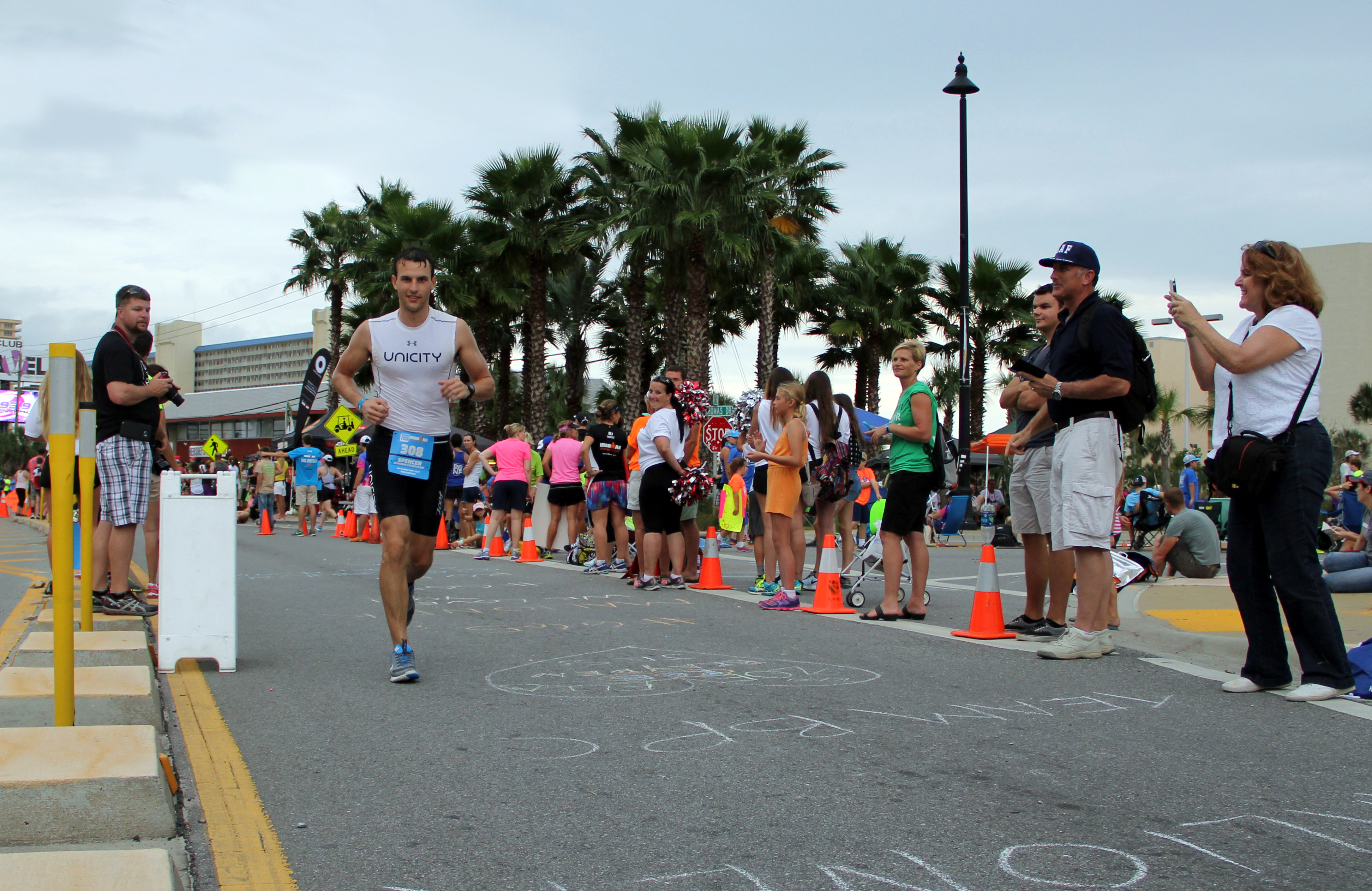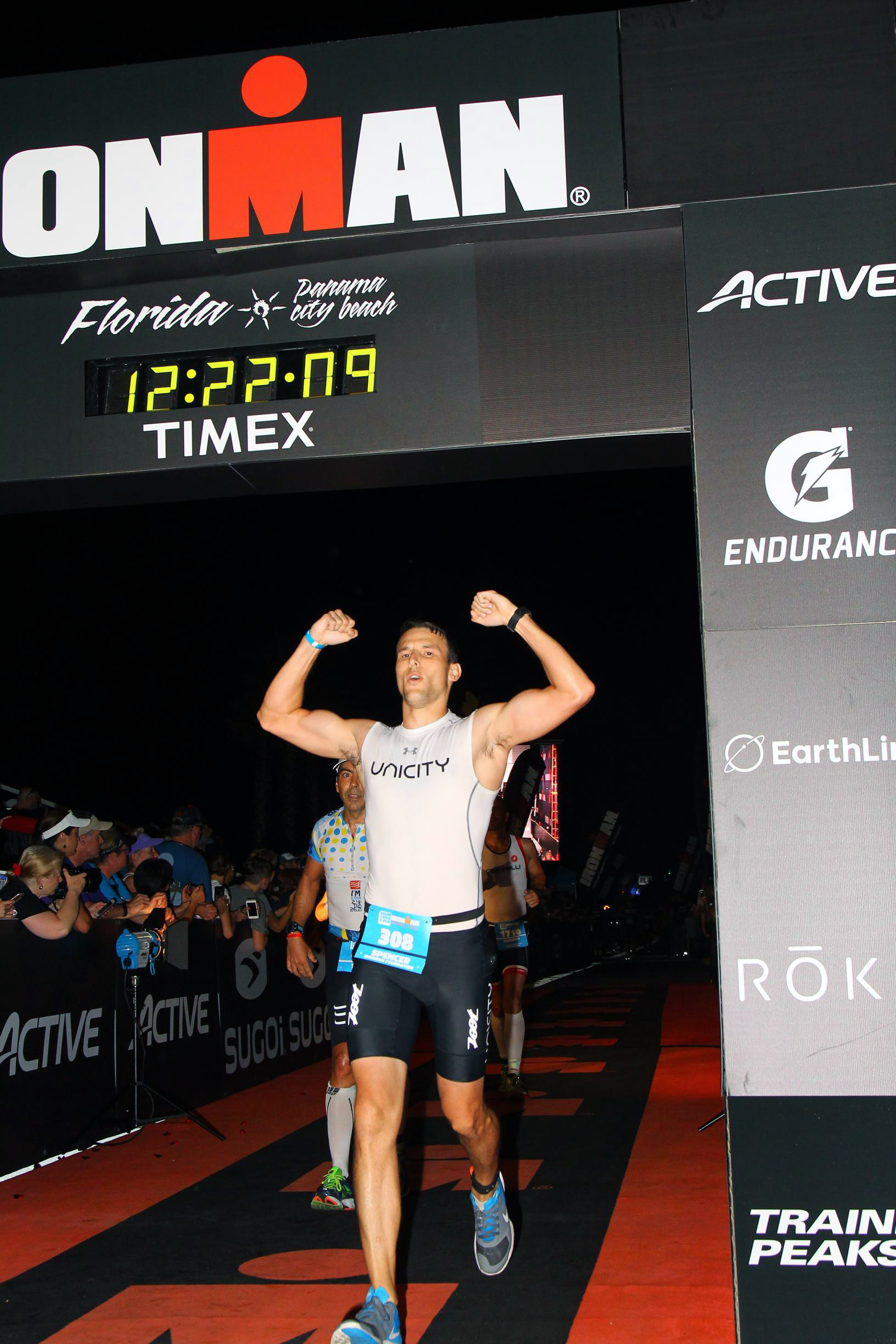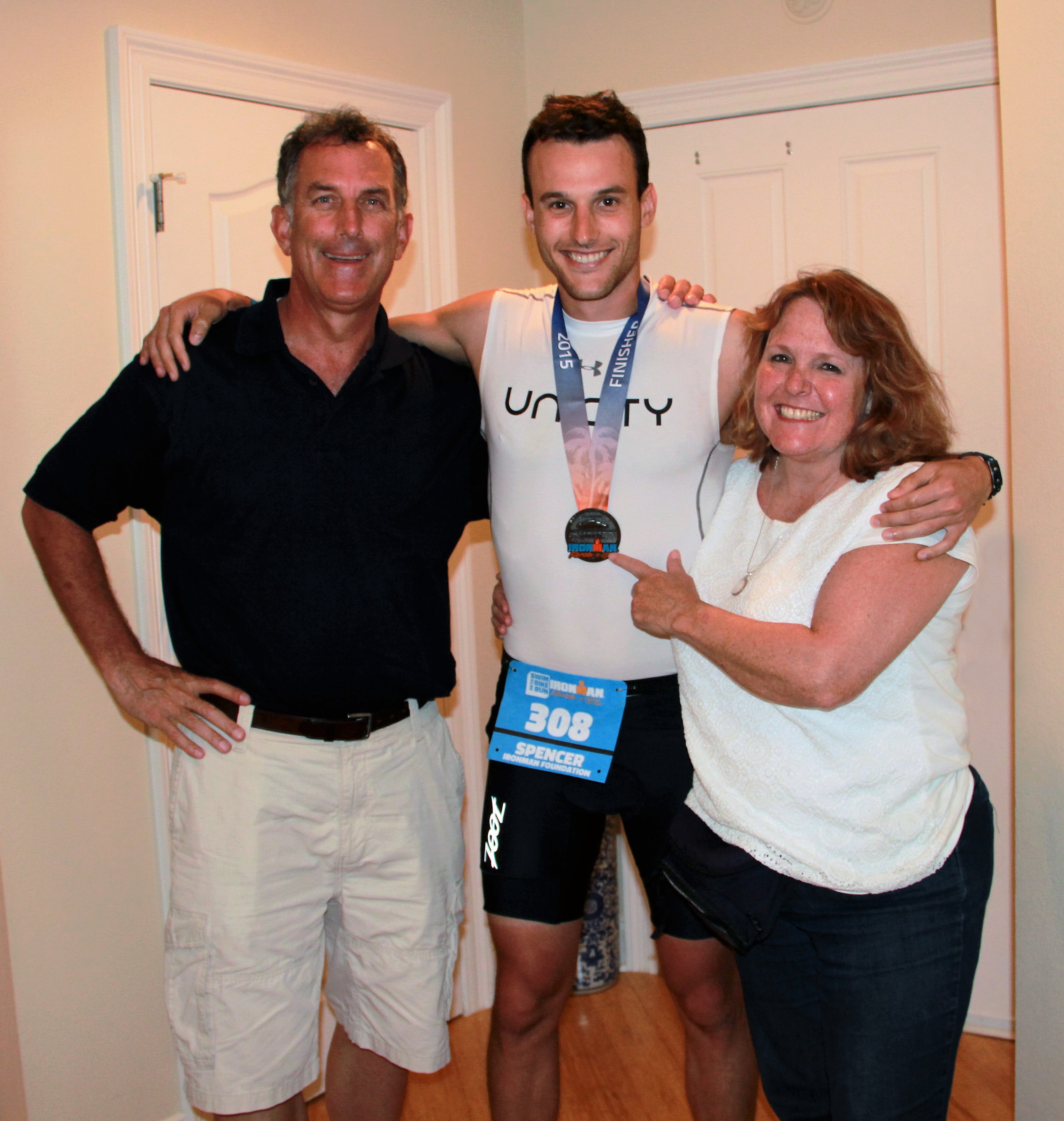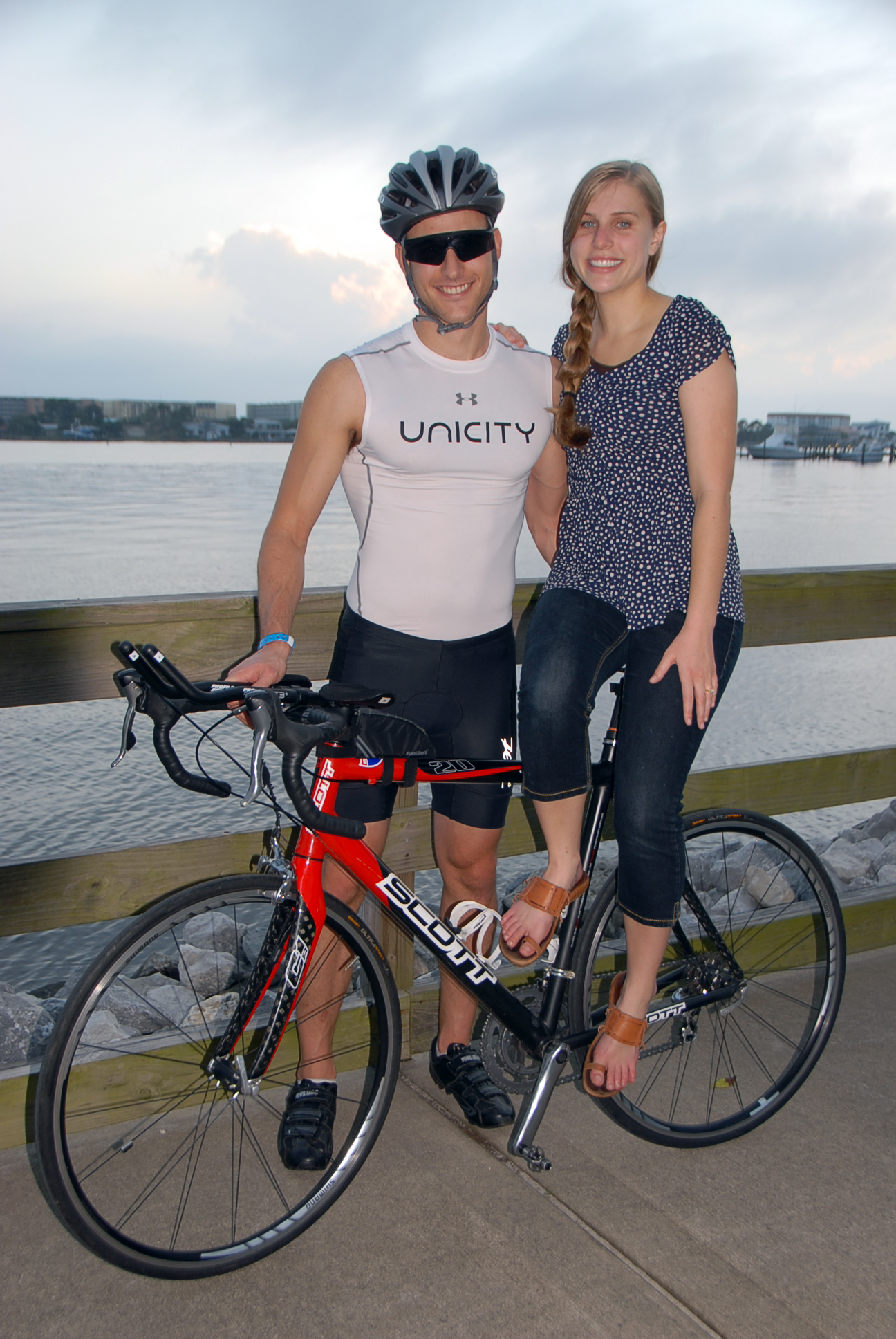
My parents thought I was a little crazy to do an Ironman, but they were extremely supportive and joined Anne to cheer me on during the race. Anne snapped this picture of them cheering off to the right as I ran by 13.1 miles into the run.
With all of the time and training I put into preparing for the Ironman, I learned a variety of things:
-Perspective changes with experience. At the beginning of my training, a 40 mile bike ride seemed pretty long. Two weeks before the race, 40 miles was an easy day of training meant to keep me loose as I tapered. When we are faced with great challenges that seem daunting, you have to start somewhere and just start chipping away. Along the way you may learn things that will help you to modify and refine your approach, but most learning comes as a direct result of doing.
-Every little bit counts. On big runs, sometimes you have to walk, but every step you take, even with a relaxed stride, takes you closer to the finish.
-“Where performance is measured, performance improves. Where performance is measured and reported, the rate of improvement accelerates.” President Thomas S. Monson If I do another Ironman, I will train with a heart rate monitor in general and a power meter on my bike. I will also use a tool like Strava to document my workouts in a format that I can quickly review and see improvement across a range of metrics. The time it takes you to cover a set distance is only one indicator of your progress, and can vary greatly depending on conditions of the day. Using other tools and metrics will help you to see your fitness and efficiency increase over time, even if that improvement doesn’t show in your splits. Seeing the whole picture can really help you to stay motivated when training gets tough.
-The body is an incredible gift from God. Think about how fast it can repair and adapt to new situations and activities. The body is a machine unparalleled by anything man has created. I am left in awe when I think about the complex processes it constantly runs to keep me moving each day. That being said, the body has physical limits, and just like a car, an athlete without fuel will hit the wall. In my research for training, I learned that the human body can store around 2000 calories in glycogen (give or take by individual). In an Ironman, this means you are already near empty as you step on dry land after the swim. Carefully planning nutrition is critical to keep you performing for hours on end. I practiced eating when training to get a feel for what foods were easy on the stomach and how much I could handle during the bike and run. I could perceive a dramatic difference between a long ride where I had eaten and taken sips of gatorade the whole time in comparison to just drinking water. In the future, you’ll see me snacking on the side of the soccer field much more often.
Most people ask me if I would do another Ironman. Yes, I will, but I don’t know when. I have other priorities right now that require my time and attention, but I enjoyed the journey and would do it again given the right circumstances. Maybe I will try and beat my 24 year-old self. It was an incredible adventure that I feel fortunate to have experienced. I have many people to thank:
-My wife, Anne, who supported me including training with me most days.
-My parents,
-An Uncle who believes in climbing life’s mountains.
-Cousins and friends who encouraged Anne and I to pursue this goal.
This is post 7 of 7 about my Ironman journey and pointers.


